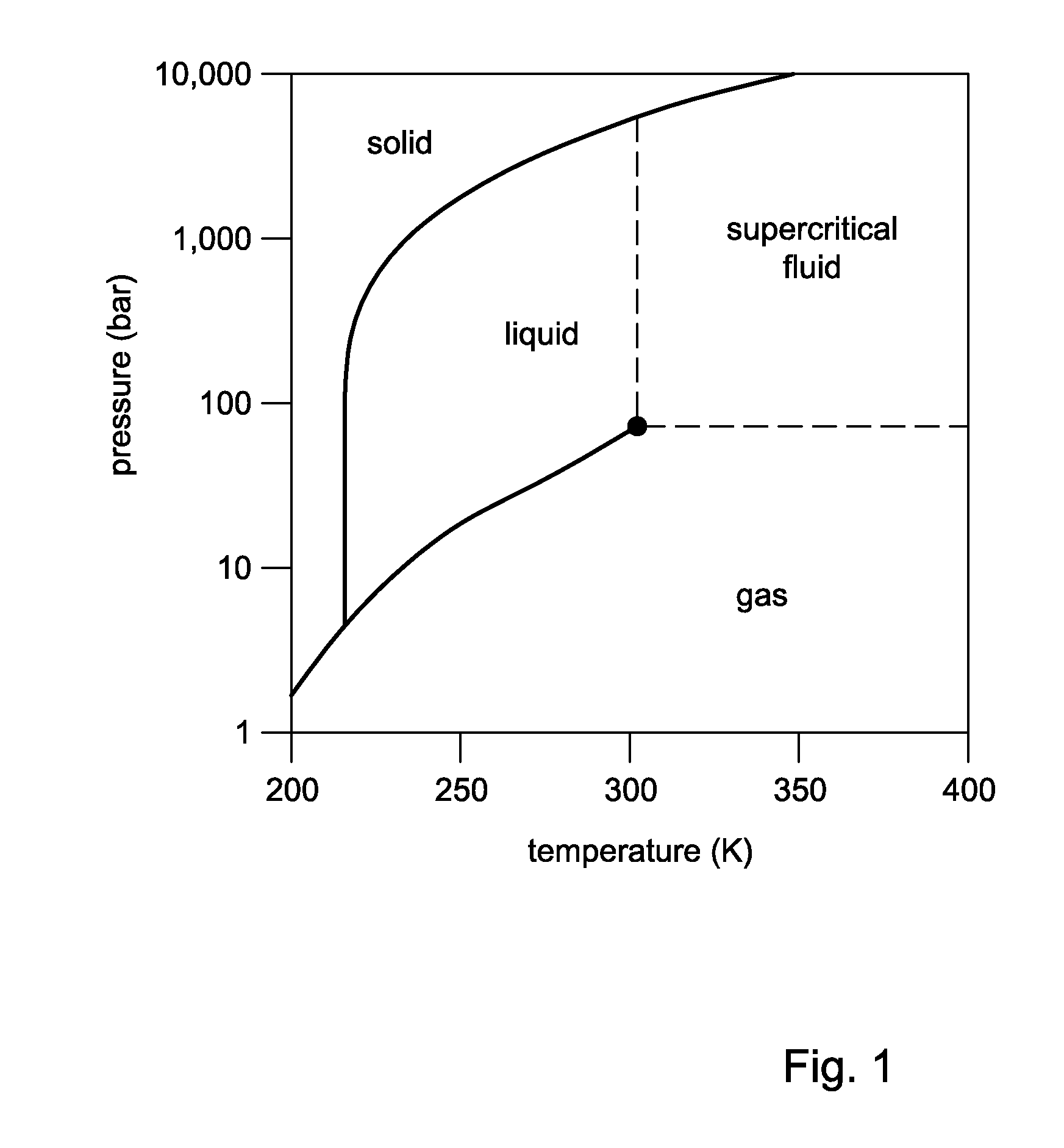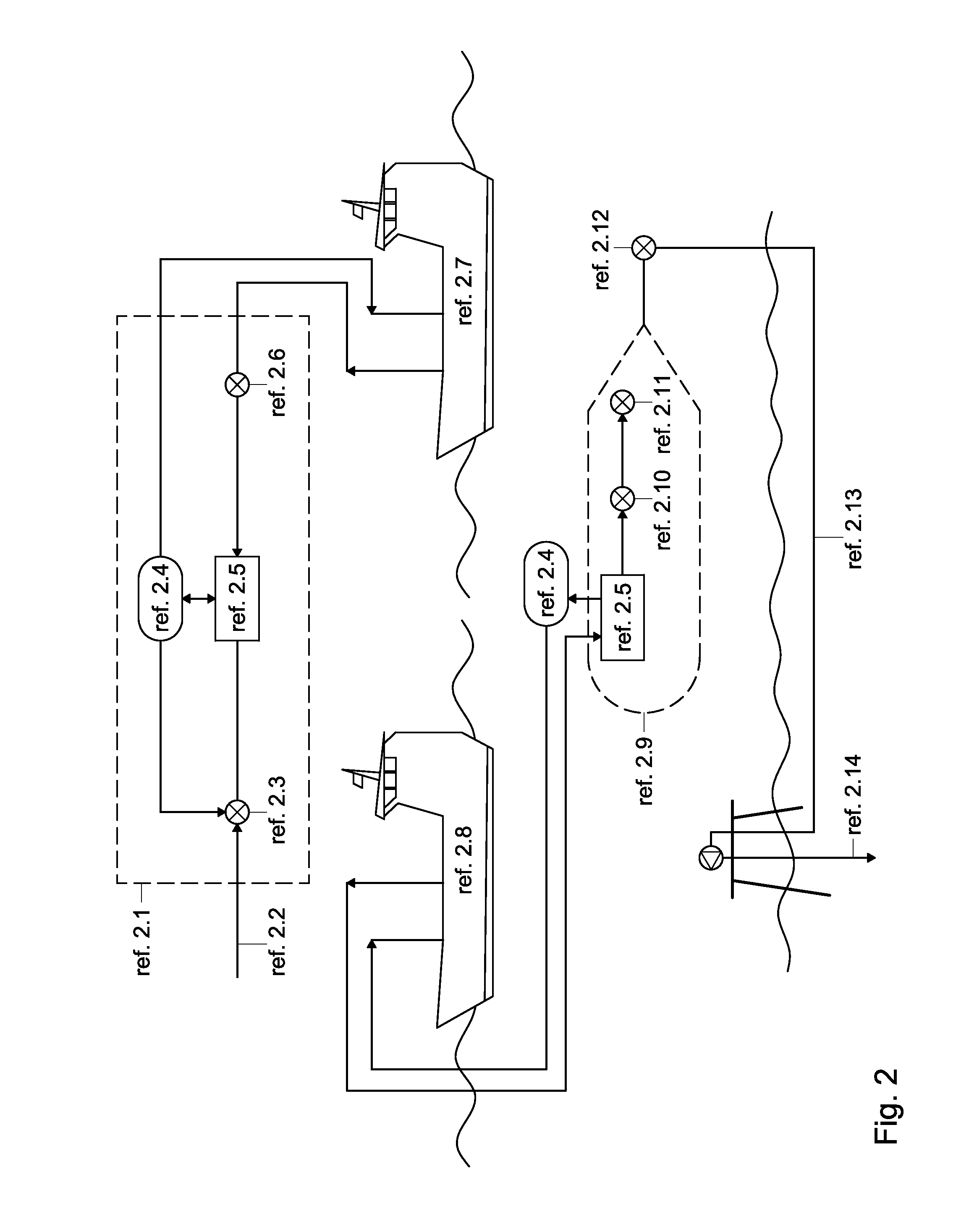Shipping method for co2 storage and import of cng
a technology of co2 storage and co2 import, which is applied in the direction of passenger handling apparatus, container discharge method, special purpose vessel, etc., can solve the problems of large distance, public opposition, safety concerns, political unwillingness, etc., and achieve the effect of reducing the cost of transporting carbon dioxid
- Summary
- Abstract
- Description
- Claims
- Application Information
AI Technical Summary
Benefits of technology
Problems solved by technology
Method used
Image
Examples
example
[0062]High pressure shipping (170 bar), as illustrated in FIG. 7.
[0063]A ship is used comprising a tubular containment system based on 28″ inches pipes with 20.6 mm thickness. The size of the ship is such as to be able to contain a total of 2.304 strings of 28″ 48 m length (split in 32 modules of 24 strings in each of the three ship's compartments).
[0064]The ship's size will be as follows:
Length250 m Beam44 mDepth34 m
[0065]Alternatively, the ship is provided with a “coselle” type of containment, using coselles made with 6″ pipe, as considered by “sea NG” company, leading to a larger ship size.
[0066]The total weight of the containment is 47,000 t, offering a volume of 40.500 m3 as internal volume.
[0067]The ship's containment system is operated at −8° C. in order to optimize the volume of stranded gas capacity which is favored by the higher gas compressibility factor at such a temperature.
[0068]The ship's 40.500 m3 internal volume provides a storage capacity of 42.708 t of CO2. This a...
PUM
 Login to View More
Login to View More Abstract
Description
Claims
Application Information
 Login to View More
Login to View More - R&D
- Intellectual Property
- Life Sciences
- Materials
- Tech Scout
- Unparalleled Data Quality
- Higher Quality Content
- 60% Fewer Hallucinations
Browse by: Latest US Patents, China's latest patents, Technical Efficacy Thesaurus, Application Domain, Technology Topic, Popular Technical Reports.
© 2025 PatSnap. All rights reserved.Legal|Privacy policy|Modern Slavery Act Transparency Statement|Sitemap|About US| Contact US: help@patsnap.com



